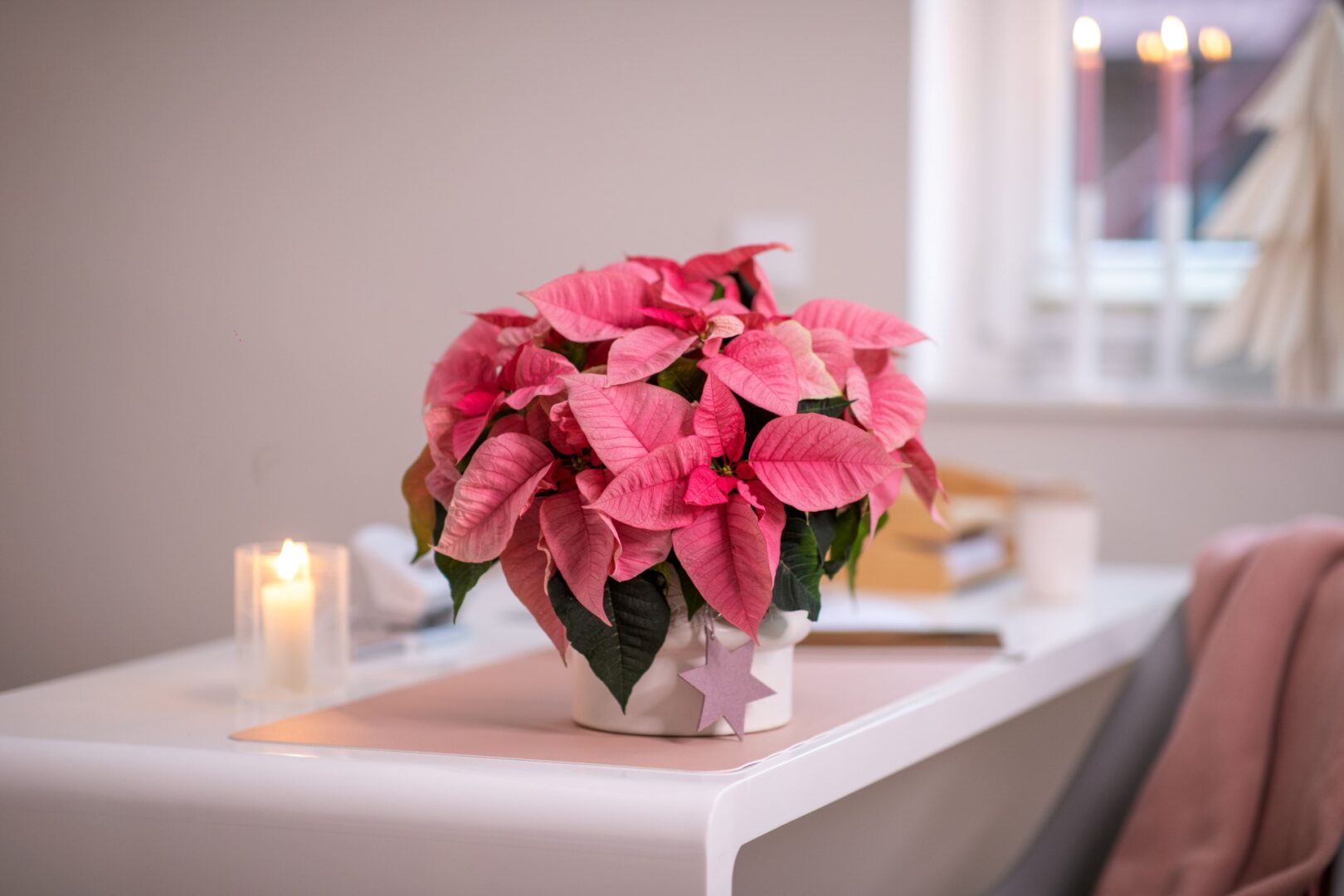Since the 1950s, when German breeders successfully grew the first poinsettias capable of thriving in heated rooms, this plant has become an indispensable part of the Advent and Christmas seasons. How can one properly care for it and keep it fresh even after winter?
The poinsettia, scientifically known as Euphorbia pulcherrima, is the queen among winter flowering plants. Its flowers are small and yellowish, but what truly captivates are the vibrant, colorful leaves that envelop the flowers. During Advent and Christmas, this plant is one of the most commonly purchased. It creates a festive atmosphere in the interior and, at the same time, enriches the collection of indoor plants. Did you know that it can also serve as a unique live decoration in a vase or make for an original gift? If you want to enjoy this plant for as long as possible, it’s crucial to know how to choose the right one from the start.
 When acquiring a poinsettia, always shop in indoor areas, such as indoor stores. Avoid purchasing this plant outdoors, at markets, or on the street. A high-quality poinsettia can be identified by its flower buds (found among the colored leaves) being closed or only slightly open. Plants that have fully bloomed will not last as long. Another sign of a healthy plant is intact, non-decaying leaves. Ensure the plants are not placed near the entrance to the store where they might be exposed to drafts. Drafts or temperatures below 12°C can harm the plant. Even if there’s no immediate noticeable impact, the leaves may start falling off shortly after bringing it home. To avoid this, always wrap the plant in paper, ideally with multiple layers, on your way home. It’s also advisable to buy it on sunny days when freezing temperatures are not a concern, preferably around lunchtime. Upon bringing your Christmas plant home, don’t unwrap it right away. Leave it wrapped for two to three hours in a cooler room, like a hallway. Only after this period should you unpack it and place it in a spot where it will remain for the next few days.
When acquiring a poinsettia, always shop in indoor areas, such as indoor stores. Avoid purchasing this plant outdoors, at markets, or on the street. A high-quality poinsettia can be identified by its flower buds (found among the colored leaves) being closed or only slightly open. Plants that have fully bloomed will not last as long. Another sign of a healthy plant is intact, non-decaying leaves. Ensure the plants are not placed near the entrance to the store where they might be exposed to drafts. Drafts or temperatures below 12°C can harm the plant. Even if there’s no immediate noticeable impact, the leaves may start falling off shortly after bringing it home. To avoid this, always wrap the plant in paper, ideally with multiple layers, on your way home. It’s also advisable to buy it on sunny days when freezing temperatures are not a concern, preferably around lunchtime. Upon bringing your Christmas plant home, don’t unwrap it right away. Leave it wrapped for two to three hours in a cooler room, like a hallway. Only after this period should you unpack it and place it in a spot where it will remain for the next few days.
If you appreciate indoor plants, don’t throw them away after the holidays; try to grow them further.
Suitable Location and Care
This winter beauty thrives with ample light indoors. However, avoid exposing the poinsettia to drafts or overly dry air. The ideal temperature range is between 15°C and 22°C. Poinsettias prefer cooler environments over heated rooms, ensuring their longevity. Avoid placing them near heat sources, like fireplaces, or cool areas with frequently opened windows or doors. You can start in a warmer location and then move it to a cooler spot, such as a hallway, overnight. Proper care is key to preserving the plant’s beauty, and it’s not overly complicated – just a few essential rules to keep in mind. In particular, regular watering with room temperature water that has been sitting overnight is necessary. The substrate should dry out between each watering to prevent overwatering. Avoid saturating the substrate with excessive water, as it may hinder root aeration, resulting in poor plant health. Additionally, make sure to remove any excess water from the plate approximately 15 minutes after watering. The frequency of watering depends on the temperature; warmer rooms require more frequent watering. In general, watering every three days or so is usually sufficient. Smaller pots may require more frequent watering than larger ones. If the pot feels lighter, it’s an indication that the substrate has dried out and requires watering. You don’t need to add fertilizers, but if you plan to continue growing the plant, you can add flowering room plant fertilizer to the water. Don’t forget to regularly remove dry or damaged leaves.
Most Common Issues
Several issues may arise when caring for a poinsettia. For instance, if the leaves suddenly begin to fall off, it may be due to the substrate being overly wet or, conversely, a lack of moisture over an extended period. Problems and plant decay can also result from drafts, cold air entering from outside, or excessively high temperatures. So, try to identify the cause, and with timely attention, you can save the plant.
After Flowering
 If you appreciate indoor plants, don’t throw them away after the holidays; try to grow them further. With some skill, you can transform it into an excellent houseplant that will delight you with its vibrant colors in the coming years. How can you achieve this? After the plant has finished flowering, trim the poinsettia bush. Start consistently fertilizing and ensure adequate watering. In spring, transplant it into a larger pot and provide fresh substrate for flowering houseplants. During the summer, consider placing it outdoors, preferably in a partially shaded location, and in the fall, bring it back inside. How can you obtain blooming with colorful leaves once more? Starting in October, cover the bush with a paper box, ensuring coverage, especially during the afternoons and nights. After approximately two months, you’ll begin to notice the leaves changing color, and soon, yellow flowers will also emerge.
If you appreciate indoor plants, don’t throw them away after the holidays; try to grow them further. With some skill, you can transform it into an excellent houseplant that will delight you with its vibrant colors in the coming years. How can you achieve this? After the plant has finished flowering, trim the poinsettia bush. Start consistently fertilizing and ensure adequate watering. In spring, transplant it into a larger pot and provide fresh substrate for flowering houseplants. During the summer, consider placing it outdoors, preferably in a partially shaded location, and in the fall, bring it back inside. How can you obtain blooming with colorful leaves once more? Starting in October, cover the bush with a paper box, ensuring coverage, especially during the afternoons and nights. After approximately two months, you’ll begin to notice the leaves changing color, and soon, yellow flowers will also emerge.
Text: Daniel Košťál, photo: Stars for Europe















